Bioblitz: What's living in your backyard?
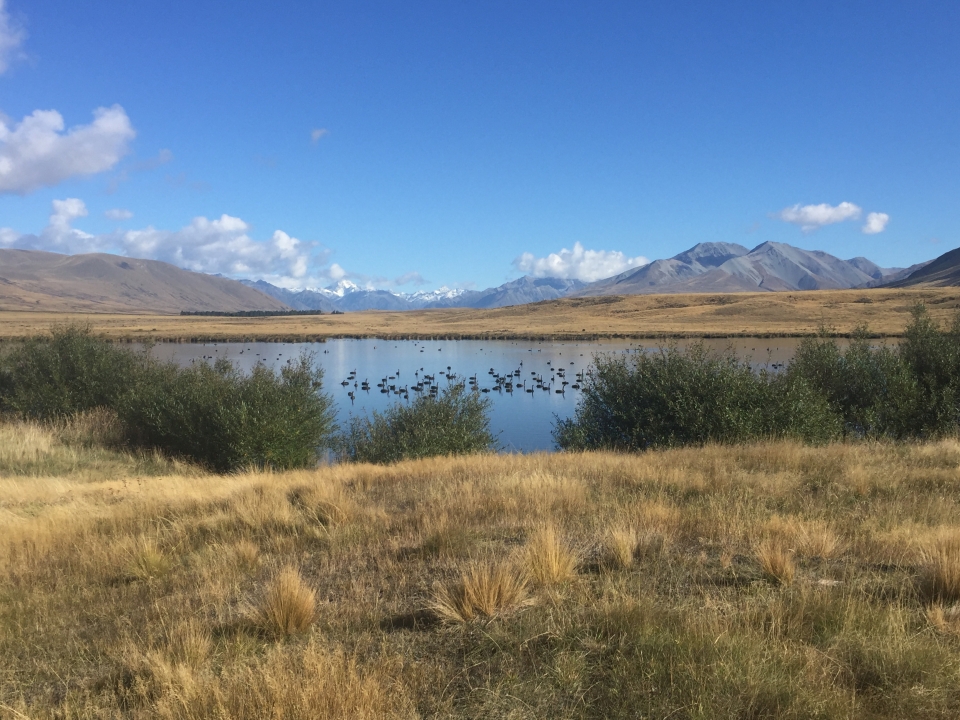
You started your BioBlitz at Lake Roundabout in Ō Tū Wharekai. What birds can you identify in this photo?

Damien, Brad, Shelley, Nancy and Ian enjoy answering West Park School students' questions during today's web conference.
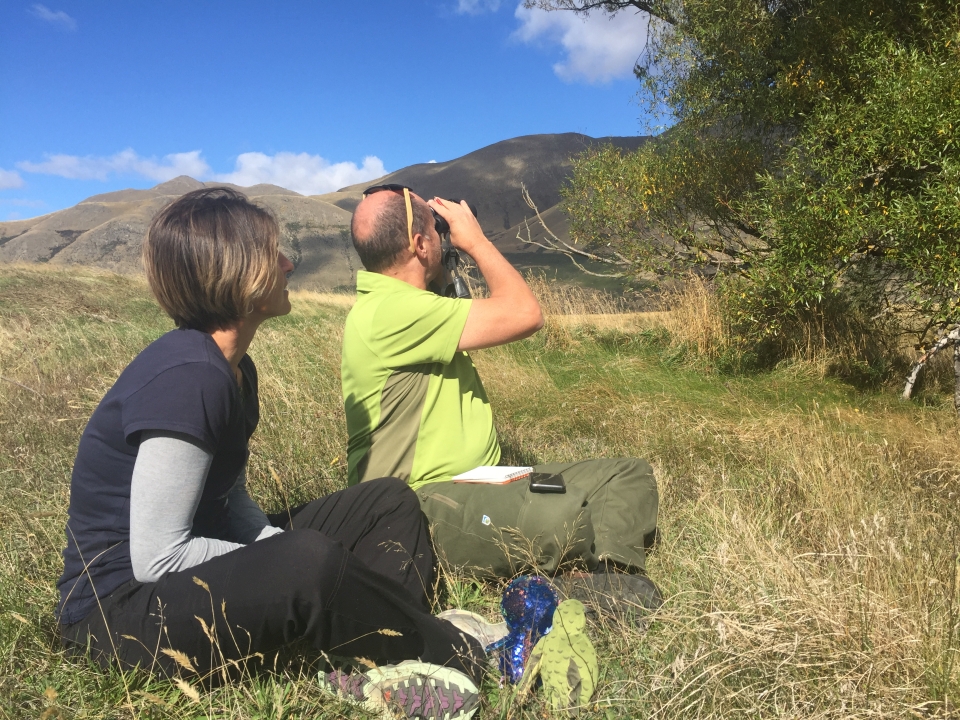
Ian shows Shelley and the ambassadors how to find and record birds by sitting quietly, using binoculars and listening for bird calls. A notebook was used to record different species. What birds do you think they saw?
Meet Ian: Senior Ranger Biodiversity
Tips for Better Bird Watching
Meet Ian from the Department of Conservation to see how to monitor and identify birds. Find out the different strategies that can be used to locate and count birds.

This tracking tunnel has been set up with peanut butter as bait. A card with ink on it will record animal footprints. What animals do you think we will find?
How do you find Land Animals?
Set up tracking tunnels and trail cameras to monitor land animals in Ō Tū Wharekai and find out which animals you are most likely to find in this area.

Brad uses a sweep net to catch insects flying above the tussock.
Meet Brad: DOC Ranger, Services (Biodiversity) Kaitiaki-Kanorau Koiora
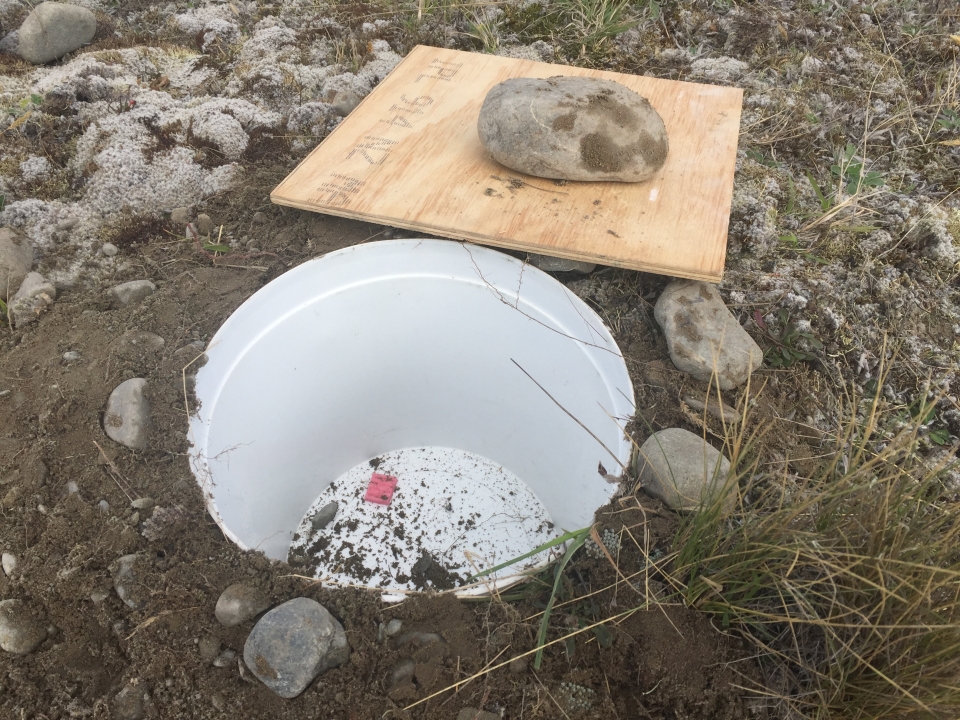
This is a pitfall trap ready to have the lid placed on top and trap any animals that accidentally fall in. Why do you think pieces of wet sponge have been placed in the trap?

Brad uses a kick net to catch aquatic invertebrates. What invertebrates do you think he will find?
How to Hunt for Invertebrates
Work with Brad a Biodiversity Ranger to catch invertebrates using four different methods.

Nancy, Brad, Shelley, Ian and Damien answer questions from Otatara School during the last field trip web conference.
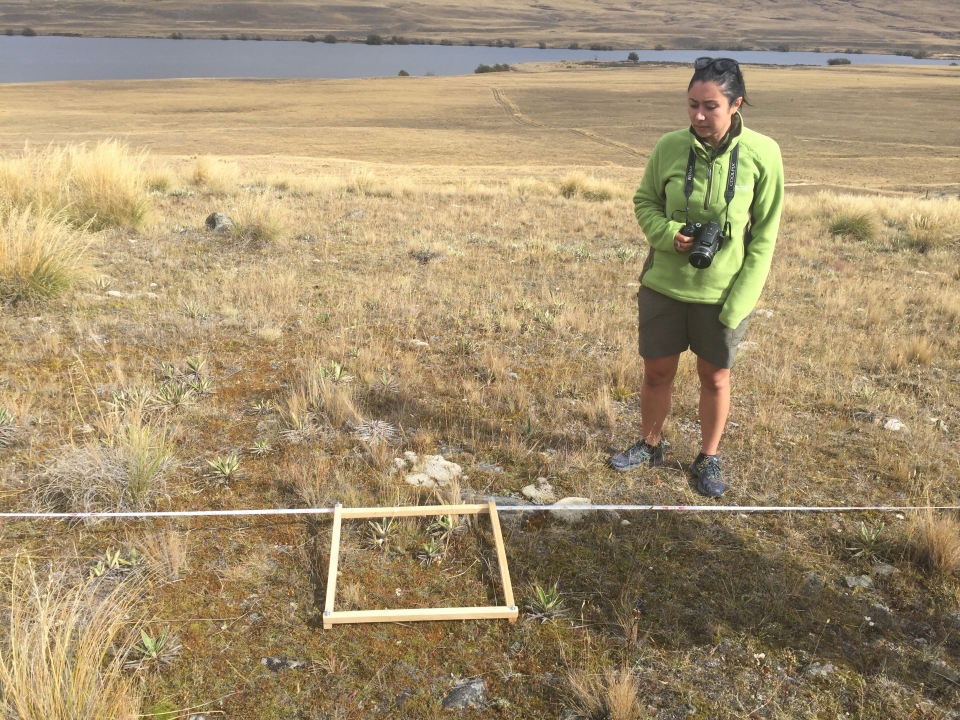
Nancy shows you how to sample plants by using a transect line and quadrat. Why do you think it is helpful to use this equipment?
Meet Nancy: Biodiversity Ranger

You found some gentians that were still flowering. Why do you think many of the flowers in alpine areas are white?
Looking for Plants
Take a 4WD trip past Lake Clearwater to survey plants. See how sampling techniques can help you to discover plants that may otherwise go unnoticed.

This large tracking tunnel was set up to try and attract animals such as wild cats. Why are wild cats a problem in this area?
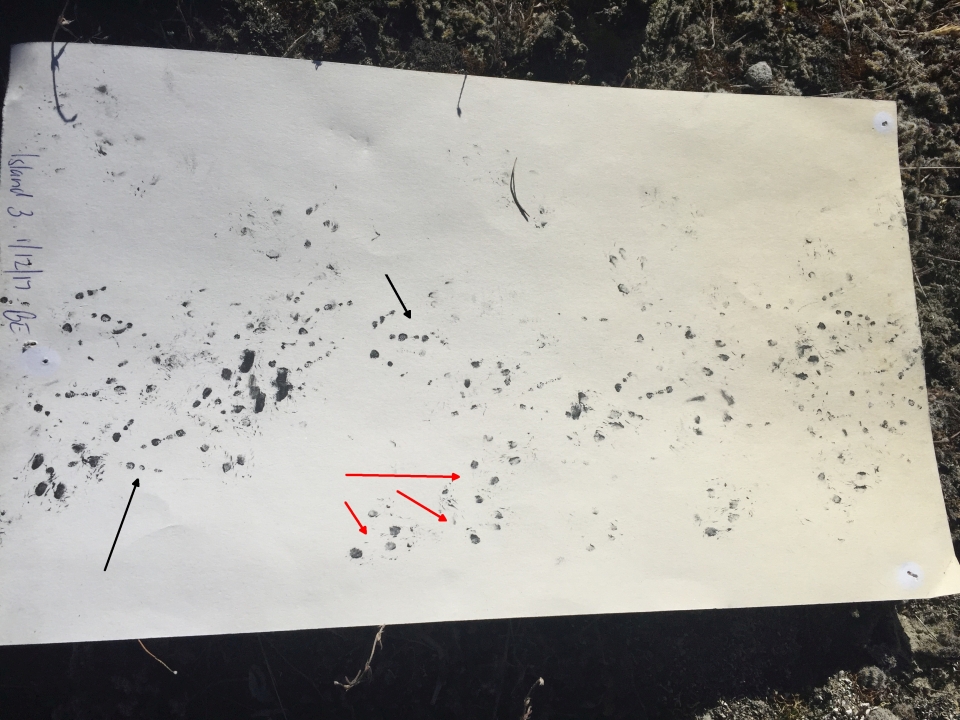
Tracking tunnels record animal footprints. The red arrows point to stoat paw prints while the black arrows point to wrybill footprints.
Checking the Tracking Tunnel
Join Damien down at the Ashburton River to check on the tracking tunnels you set up yesterday. Find out what animals live in this area and how to identify these animals.
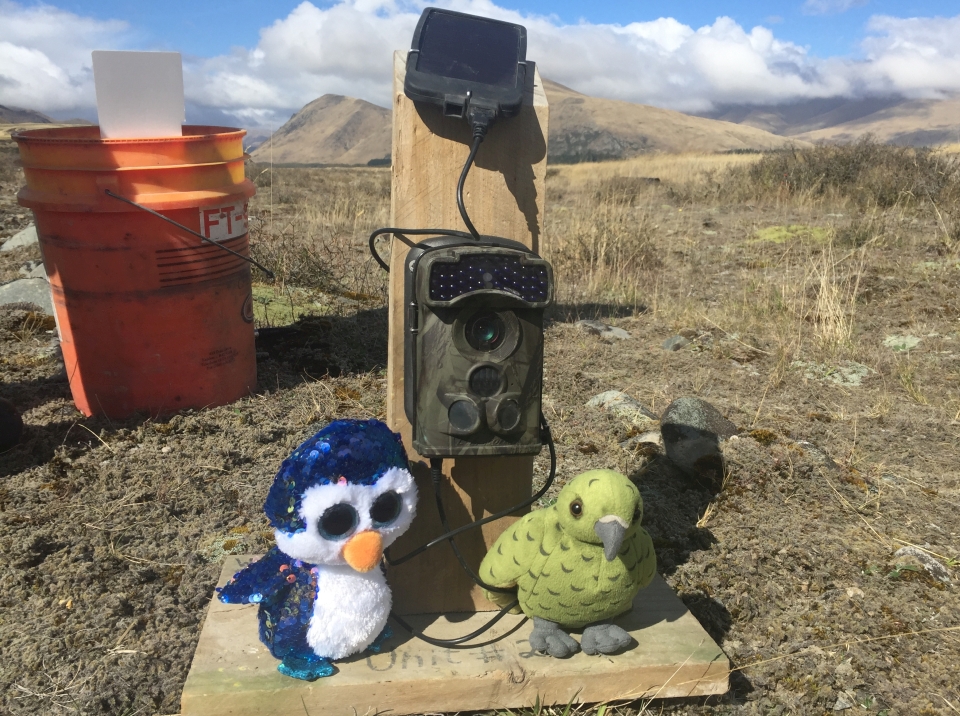
Pengu and Māia check out the trail camera that can be set up to monitor predators. How does this camera work?

Damien checks one of the trail cameras. What animals might you expect to see on this camera?
Meet Damien: Biodiversity Ranger
The Benefits of Trail Cameras
Take a look at a trail camera and find out why it is such a useful tool in monitoring land animals and nesting sites in Ō Tū Wharekai. See if it has captured any images of animals overnight.
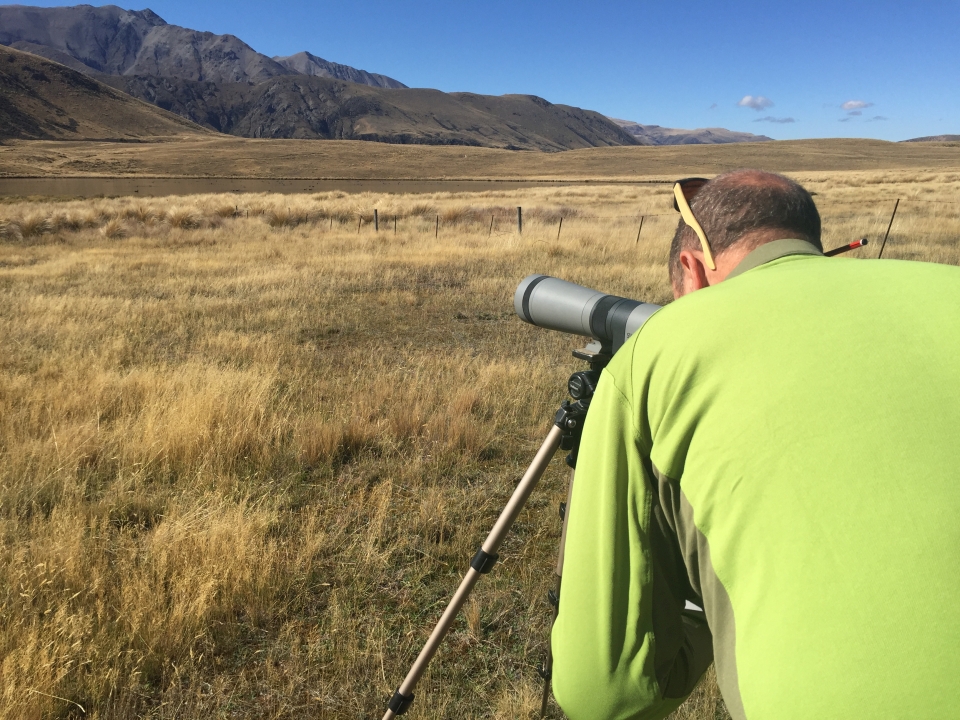
Ian looks for birds at Lake Emily. What birds do you think he will see in this habitat?
Analysing Our Bird Observations
Explore Lake Emily and talk to Ian about how to make useful bird observations. Find out more about native and introduced birds in Ō Tū Wharekai.
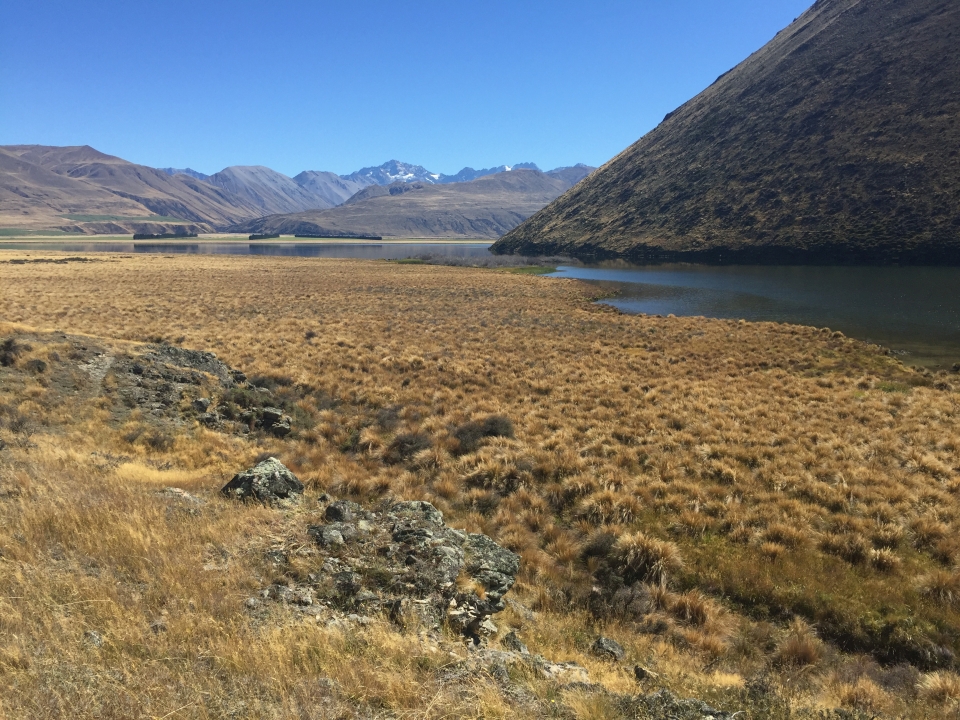
Looking out over a wetland area alongside Lake Heron in Ō Tū Wharekai.
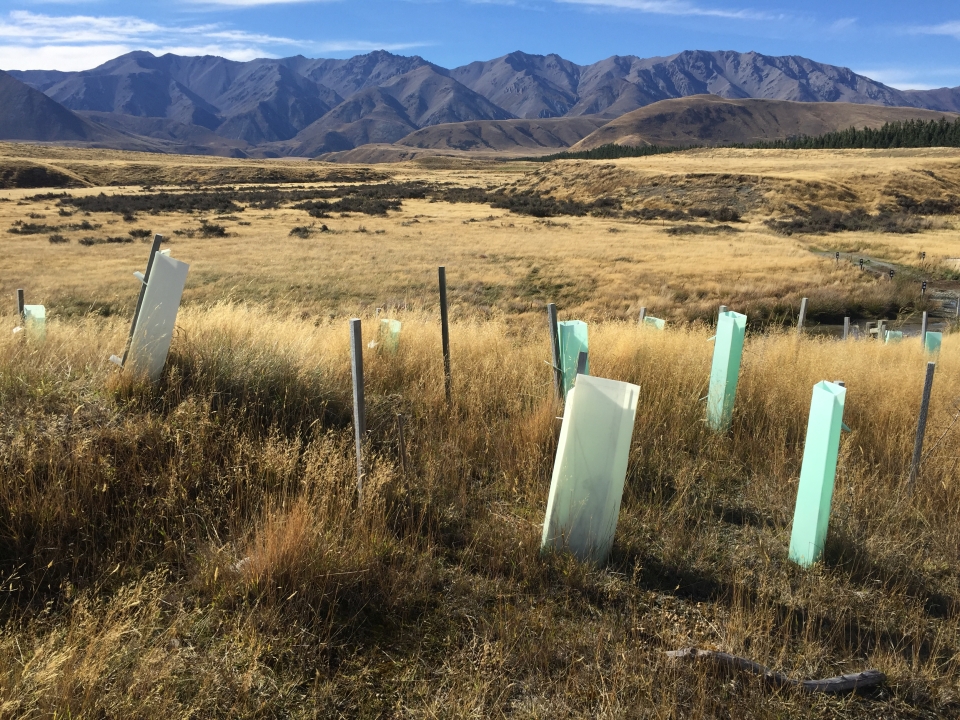
This area of Ō Tū Wharekai is being restored with native plants. Why are plastic sleeves placed around the plants?
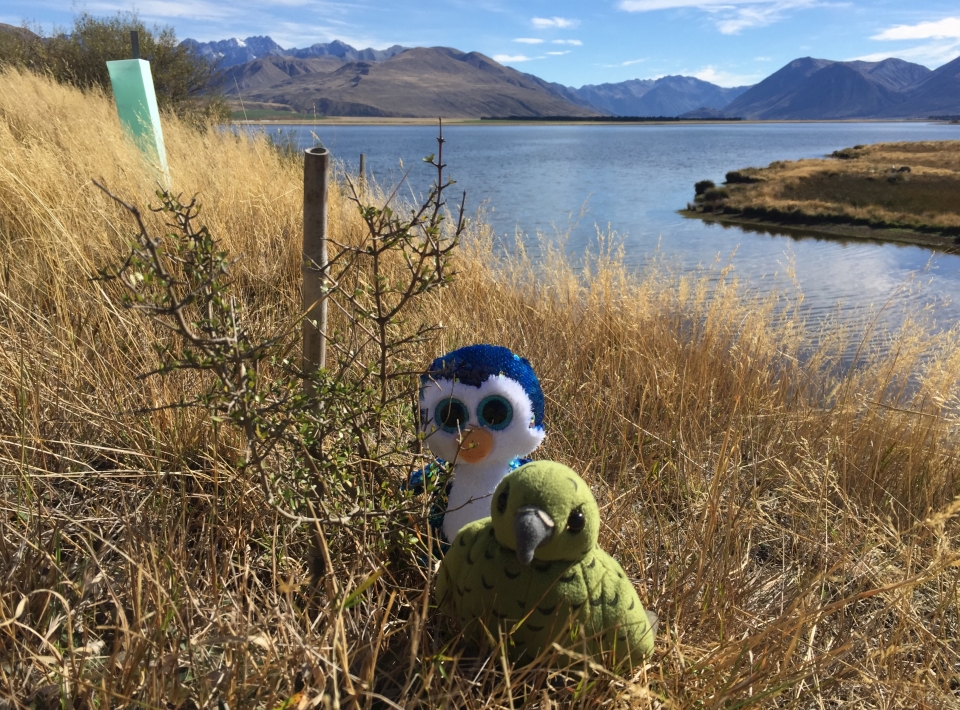
The ambassadors Pengu and Māia check out one of the native coprosmas that have been planted beside Lake Heron.
Investigating Some Special Plants and Fungi
Take a walk past Lake Heron. Look at the special plants, lichen and fungi that grow here and the adaptations they have to survive.
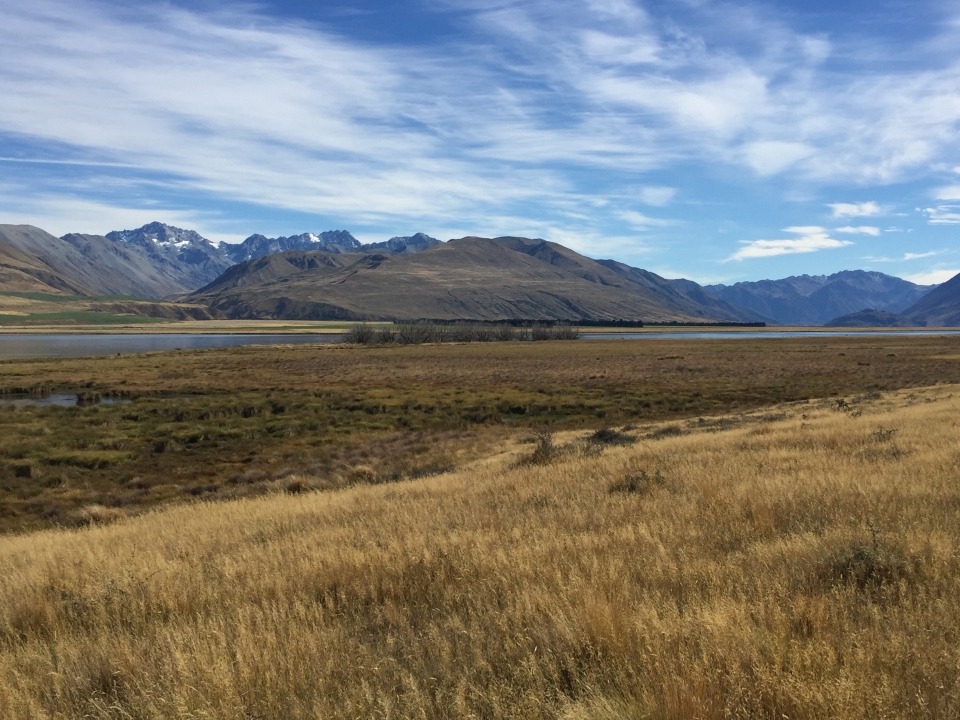
In the distance you can see a line of dead willow trees. Why do you think these willow trees have been killed?
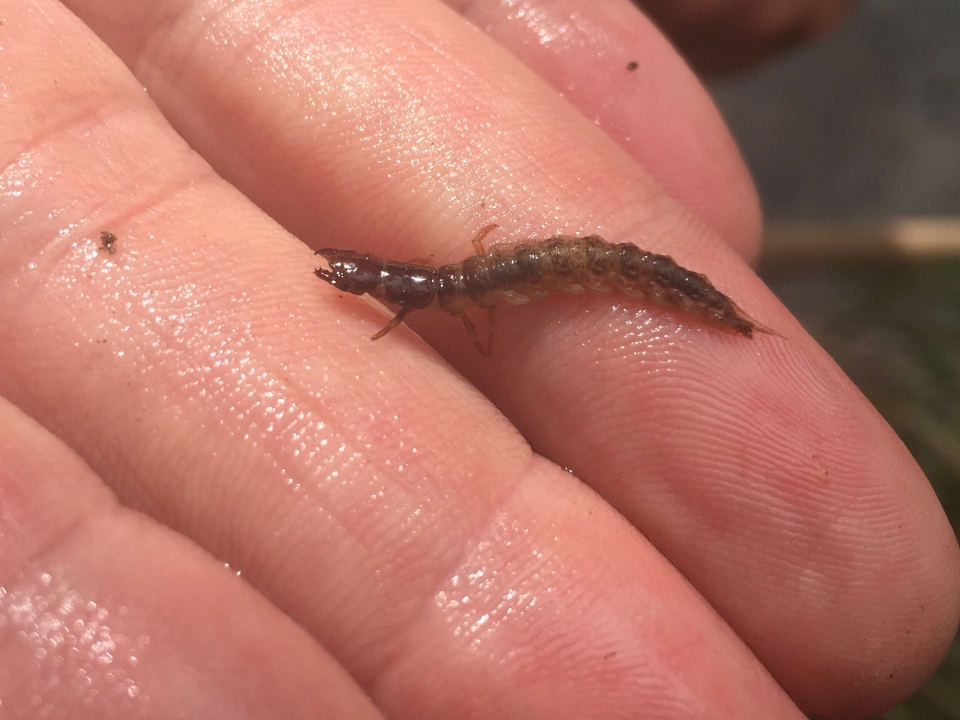
Brad finds a dobsonfly or toe biter. You can see the external gills that run along each side of its body.

This is a mountain stone wētā. What adaptations do these invertebrates have to help them survive harsh winters in Ō Tū Wharekai?
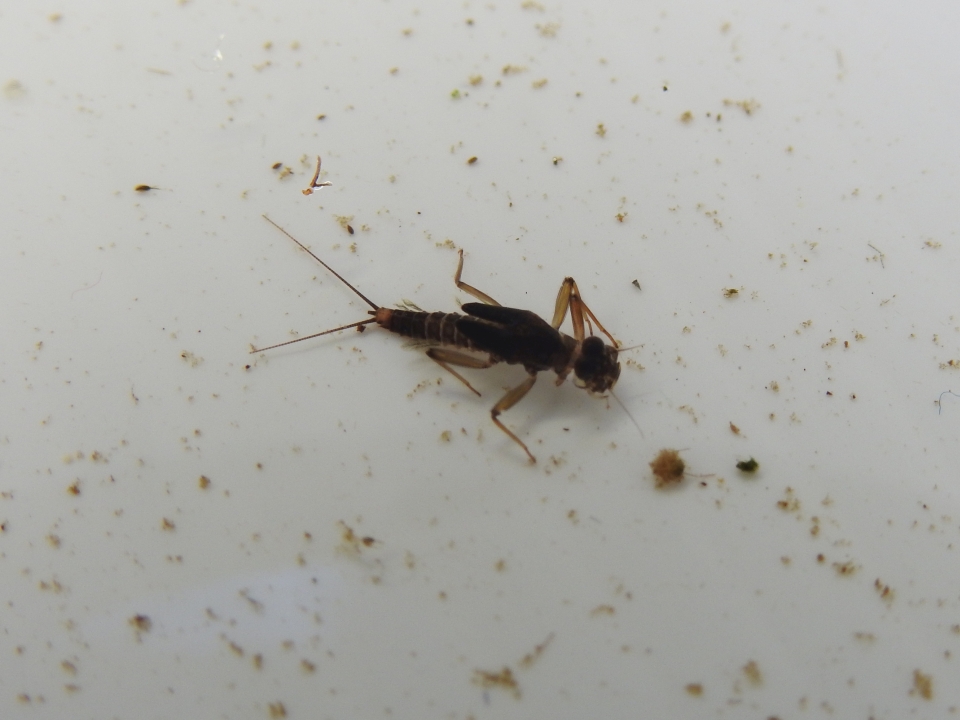
This is a stonefly nymph which was caught using a kick net. A stone fly has a two part tail, while a mayfly has three.
A Closer Look at Some Invertebrates
Find out what invertebrates Brad has caught using a sweep net, pitfall trap and kick net. Discover more about the secret life of terrestrial invertebrates. Then look at examples of aquatic invertebrates. If you look closely as well as a caddis fly you can see a stonefly and mayfly.
Attracting Birds with Good Planting
Take a look at an area of native planting alongside Lake Heron. Talk to Ian about what plants to grow in restoration areas and why planting projects are important for native birds.
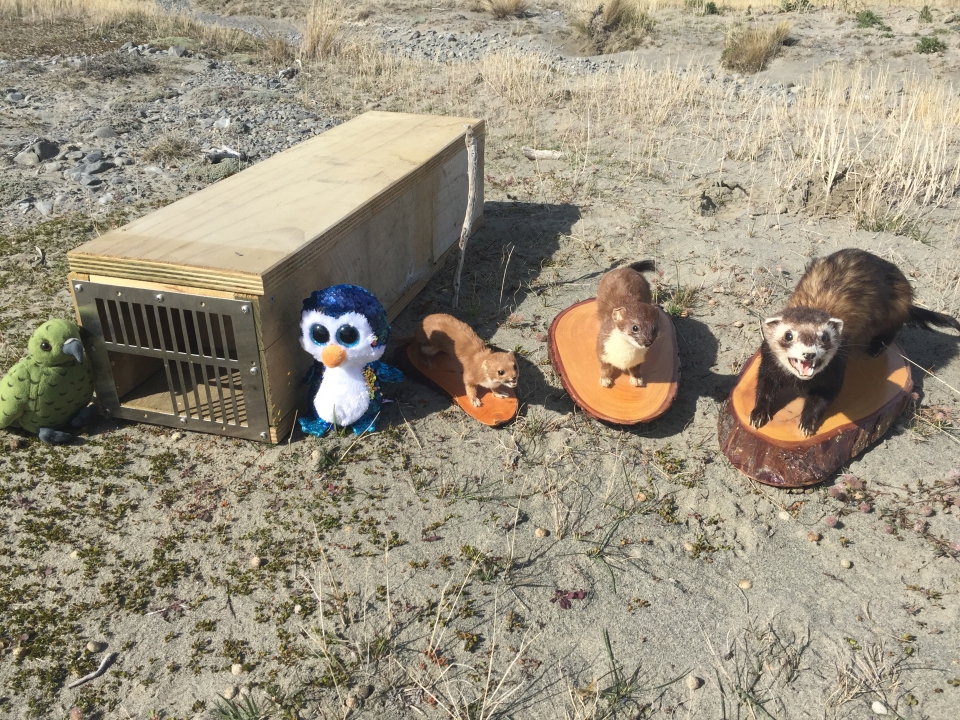
The ambassadors check out a trap for predators such as this weasel, stoat and ferret. Why are these predators a problem?
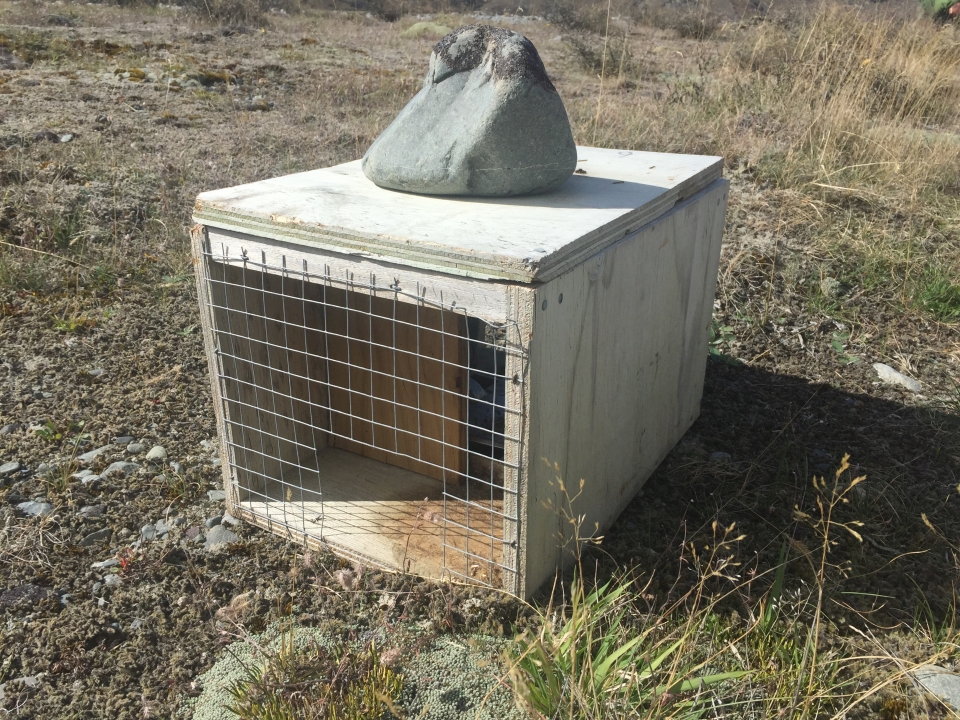
This is a DOC trap used to reduce predator numbers in Ō Tū Wharekai.
Controlling Mammalian Predators
Meet the predators that threaten our native birds, lizards and invertebrates. Find out why these predators pose such a threat and see how to control predator numbers by setting traps.
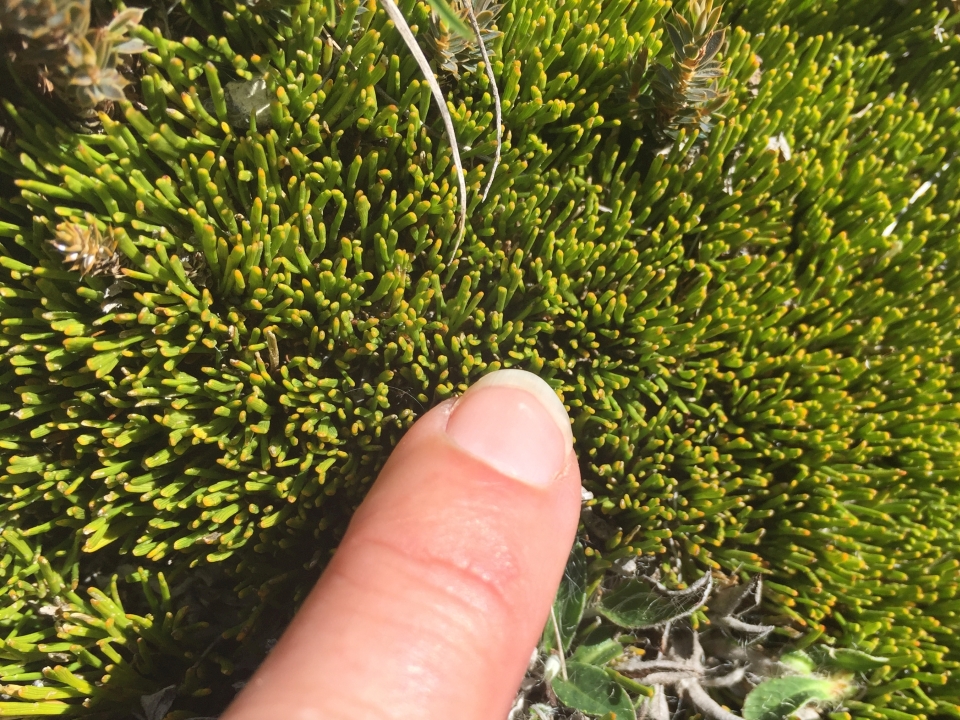
This is a native broom species growing in Ō Tū Wharekai. What adaptations does this plant have?

The ambassadors find some lichen growing on rocks in Ō Tū Wharekai. What is special about lichens?

This is a herb called Craspedia heron which is only found in Ō Tū Wharekai.

Nancy weeds around some of the Craspedia heron plants which have been grown from seed. What is the fence for?
Craspedia heron aka Woolly Head
Discover a unique high country herb that only grows in Ō Tū Wharekai and find out what the Department of Conservation is doing to save this plant from extinction.

Nancy collects the berries from a coprosma so she can grow more of these plants. This is called eco-sourcing seeds. Why is eco-sourcing important?
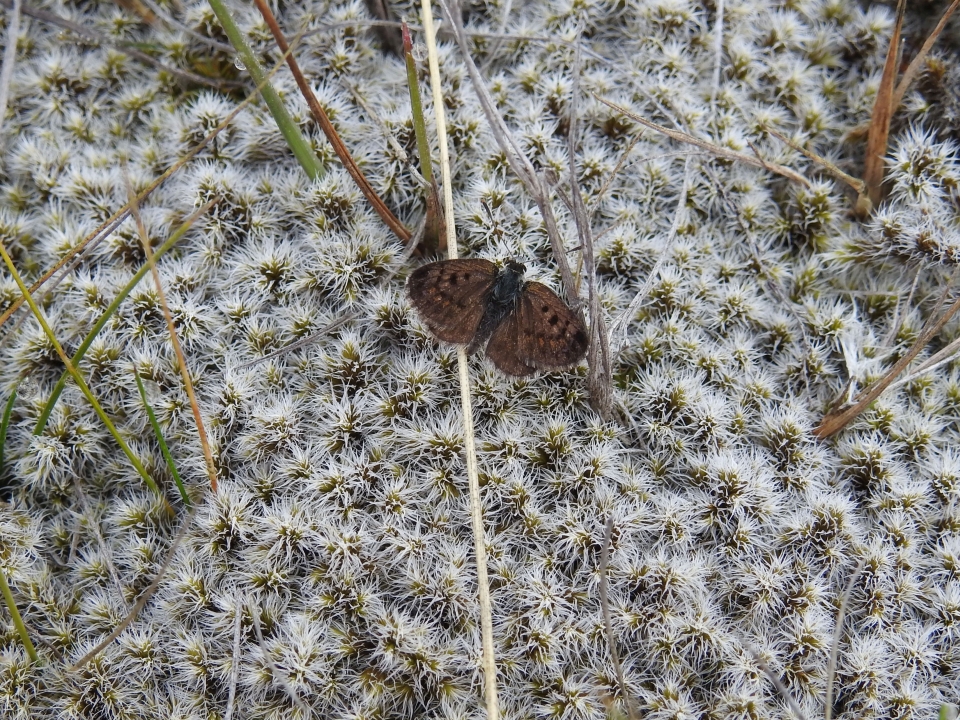
Brad caught this boulder copper butterfly during the BioBlitz. It is one of the smallest native butterflies in New Zealand.
The Power of a Bioblitz
Check the sweep net to see what critters Brad has found. Take some time to think about all the different species you have discovered this week and how you can take more action after completing a BioBlitz.



